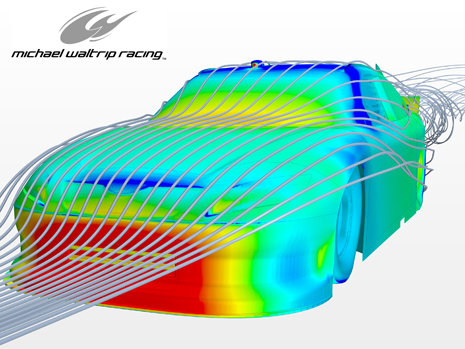As I understand it, at speed (
while traveling down the road) there is an air pressure build-up at the front of the car as the air is compressed.
A lot of that pressure is at the lower chin because the air at the top part of the front has an easy escape path up and over the hood, there is acceleration of the air and lowering of pressure when this happens.
Meanwhile the air attempting to escape under the car is not allowed to expand or escape and remains compressed under high pressure.
Look at your radiator, all those little fins.
Do you think air is going to easily pass through if there is no pressure behind it to back it up?
Or do you think higher pressure air has a better chance of being pressed though it?
NASCAR Computational Fluid Dynamics (CFD) Surface Pressure Plot
https://robrobinette.com/S2000Aerodynamics.htm

Quote:
|
In the CFD pressure plot above note these standard pressure areas common to most cars: very high pressure (red) bubble on the nose of the car, the slight low pressure (aqua) over the hood, the moderate pressure (yellow) bump at the hood/windshield junction and the very low pressure (dark blue) area above the roof of the car where most of the lift is generated. Graphic by Michael Waltrip Racing.
|
Short answer: Upper grille block is the norm around here.